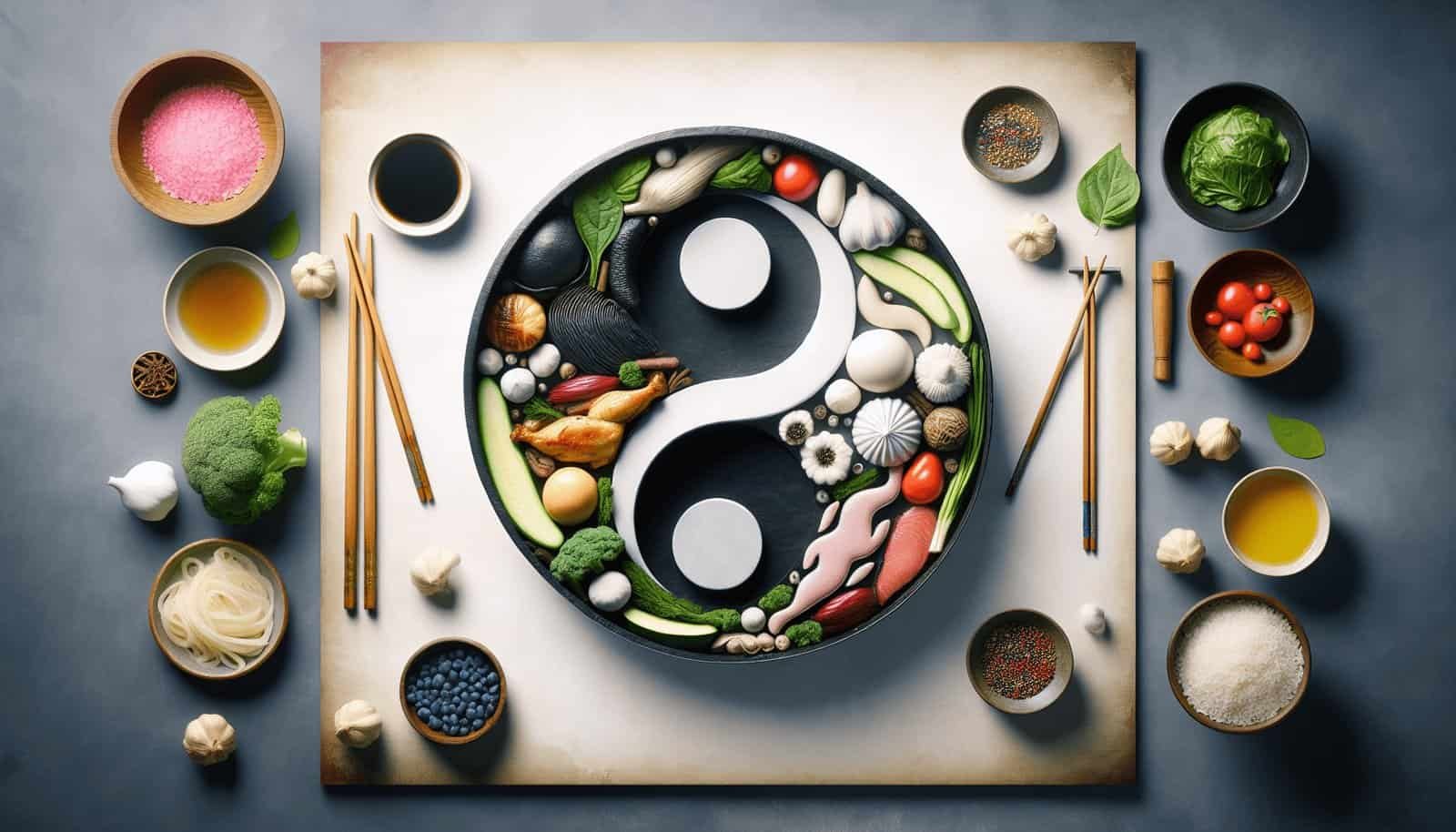In the world of Korean cuisine, the philosophy of balance plays a pivotal role in shaping the flavors and techniques used in their dishes. Korean cooking emphasizes the harmony between different elements – flavors, textures, and colors – to create a truly satisfying culinary experience. By carefully selecting and combining ingredients, Korean chefs strive to achieve a delicate equilibrium, where each component complements and enhances the others. From the spicy kick of gochujang to the umami richness of doenjang, the philosophy of balance is deeply woven into the fabric of Korean cooking, resulting in delightful and harmonious meals that captivate the taste buds.
Introduction
In Korean cooking, the philosophy of balance plays a fundamental role. This approach aims to achieve harmony in the flavors, ingredients, cooking methods, and even the presentation of the food. The belief is that when these elements are in balance, it not only enhances the taste of the dishes but also promotes physical and emotional well-being. Korean cuisine is renowned for its explosion of flavors and the meticulous attention to achieving a perfect balance in every aspect of the meal. Let us delve deeper into how this philosophy of balance influences Korean cooking.
Harmony of Flavors
Sweet and Salty
The combination of sweet and salty flavors is a common characteristic of Korean cuisine. By balancing these two taste profiles, Korean dishes achieve a unique and harmonious flavor. For example, the iconic Korean dish, Bulgogi, combines the sweetness of marinade with the savory umami taste of beef. This balance creates a tantalizing experience for the taste buds.
Spicy and Mild
Korean cuisine is also known for its bold use of spices. Spicy flavors, such as gochujang (Korean chili paste) or kimchi, are often balanced with milder ingredients to create a harmonious blend. This balance allows the spicy flavors to shine without overwhelming the palate. The popular dish, Bibimbap, is a perfect example of the harmony between spicy and mild flavors, where the spicy gochujang sauce is paired with a variety of fresh vegetables and rice.
Sour and Savory
Sourness adds a refreshing element to Korean dishes, and it is often balanced with savory flavors. Ingredients like vinegar, fermented foods, and citrus fruits are used to achieve this balance. Take, for instance, the famous Korean dish, Kimchi, which combines the sourness of fermented cabbage with the umami of fish sauce and savory vegetables. This balance of sour and savory creates a complex and delightful taste.

Balanced Ingredients
Grains and Staples
Korean cuisine emphasizes the importance of incorporating grains and staples in every meal. Rice, specifically, is a staple ingredient and forms the foundation of many Korean dishes. It provides a balance of carbohydrates and essential nutrients. Other grains like barley, millet, and buckwheat are also commonly used to add variety and nutritional balance to the diet.
Vegetables and Fruits
Fresh vegetables and fruits are integral components of Korean meals. Koreans believe in consuming a wide range of vegetables to ensure a balanced diet. Root vegetables, leafy greens, and sprouts are frequently incorporated into various dishes. Fruits, such as Korean pears or persimmons, are often enjoyed as a dessert or snack, adding natural sweetness and nutrients to the meal.
Proteins and Seafood
Proteins and seafood play a crucial role in Korean cuisine, providing essential nutrients and flavors. A well-balanced Korean meal typically includes a variety of protein sources, such as beef, chicken, pork, tofu, or legumes. Seafood, including fish, shrimp, and squid, adds a unique and delicate taste to the dishes. The combination of proteins and seafood ensures a balanced intake of essential amino acids.
Seasonal and Local Produce
Emphasis on Seasonality
Korean cooking emphasizes the use of seasonal ingredients, capitalizing on their availability and peak flavors. The concept of “naturally balanced” is at the core of this approach. By using ingredients at their seasonal best, Korean dishes capture the optimal taste and nutritional value of each component.
Regional Specialties
In addition to seasonality, Korean cooking also celebrates the diversity of regional specialties. Each region in Korea offers unique ingredients that reflect the local climate and cultural influences. From the seafood-rich dishes of coastal regions to the hearty mountain cuisine, the balance of flavors and ingredients in regional specialties reflects the distinctiveness of each area.

Nutritional Balance
Healthy Cooking Methods
Korean cooking techniques focus on preserving the nutritional value of ingredients while enhancing flavors. Steaming and boiling are popular methods, as they retain the natural goodness of vegetables and proteins. Stir-frying with minimal oil is another technique that allows for quick cooking while keeping the ingredients crisp and nutritious. These methods ensure that the balance between taste and nutrition is maintained.
Well-balanced Meals
Korean meals are typically composed of various dishes, both main and side dishes, to ensure a well-balanced intake of nutrients. These meals are designed to provide a range of flavors, textures, and nutritional benefits. The combination of rice, soup, main dishes, and various banchan (side dishes) creates a complete and balanced meal, fulfilling the nutritional needs of the body.
Medicinal Properties of Food
Influence of Traditional Korean Medicine
The philosophy of balance in Korean cooking is deeply influenced by traditional Korean medicine. Korean cuisine incorporates ingredients that are believed to have medicinal properties. These ingredients, known as “yangnyeom” or medicinal seasonings, include garlic, ginger, sesame oil, and various herbs. They not only add flavor but also contribute to the overall well-being of the body.
Use of Healing Ingredients
Korean cooking also emphasizes the use of healing ingredients known for their health benefits. Ginseng, for example, is believed to enhance vitality and boost the immune system. Other healing foods such as fermented soybean paste (doenjang) and fermented soy sauce (ganjang) are rich in probiotics, promoting gut health. These healing ingredients are carefully balanced within dishes to optimize their beneficial properties.

Balance in Cooking Techniques
Steaming and Boiling
Steaming and boiling are cooking techniques commonly used in Korean cuisine, prioritizing the retention of nutrients and flavors. Steaming preserves the natural sweetness and tenderness of ingredients, ensuring a light and healthy cooking method. Boiling, on the other hand, allows for the extraction of flavors from various ingredients, contributing to the overall balance of the dish.
Fermentation
Fermentation is a key technique in Korean cooking, providing unique flavors and health benefits. The fermentation process enhances the umami taste of ingredients while breaking down complex substances into more digestible components. Foods like kimchi and doenjang are fermented, creating a balance of flavors that is both tangy and savory.
Grilling and Roasting
Grilling and roasting are techniques that add depth and complexity to Korean dishes. These cooking methods create a balance between smoky, caramelized flavors and the natural taste of the ingredients. Grilled meats, such as bulgogi or samgyeopsal, offer a perfect blend of charred exterior and juicy interior, resulting in a harmonious dining experience.
Presentation and Aesthetics
Colorful and Beautiful Plating
Korean cuisine pays meticulous attention to the visual presentation of dishes. The use of vibrant and contrasting colors creates an aesthetically pleasing plate. Green vegetables, red chili peppers, and yellow pickles are often used to add pops of color. The arrangement of ingredients in a visually appealing manner contributes to the overall balance and enjoyment of the meal.
Balance of Textures
The harmony of textures is another aspect of Korean cuisine’s presentation. Each dish strives to offer a combination of crunchy, chewy, and tender textures. From crisp lettuce wraps to sticky rice cakes, the balance of textures elevates the dining experience, creating a delightful interplay between ingredients.

Shared Dining Culture
Communal Eating
Korean dining culture revolves around communal eating, promoting a sense of togetherness and sharing. The act of sharing a meal with family and friends enhances the overall dining experience. It allows for a variety of dishes to be enjoyed together, ensuring a balanced intake of flavors and nutrients.
Shared Side Dishes
Korean meals are often accompanied by a variety of side dishes, known as banchan. These small plates consist of a wide range of flavors and textures. By offering a selection of banchan, everyone at the table can create their own balanced combinations, tailoring their meals to individual preferences and dietary needs.
Conclusion
The philosophy of balance is deeply ingrained in Korean cooking. From the harmony of flavors to the balance of ingredients, Korean cuisine seeks to create a wholesome and enjoyable culinary experience. The emphasis on seasonal and local produce, the integration of medicinal properties, and the careful balance of cooking methods and presentation come together to create a cuisine that is both delicious and nourishing. So, whether you’re relishing the delectable flavors of Bibimbap or savoring the complex tastes of Kimchi, you can appreciate the deep-rooted philosophy of balance that underpins Korean cooking.

